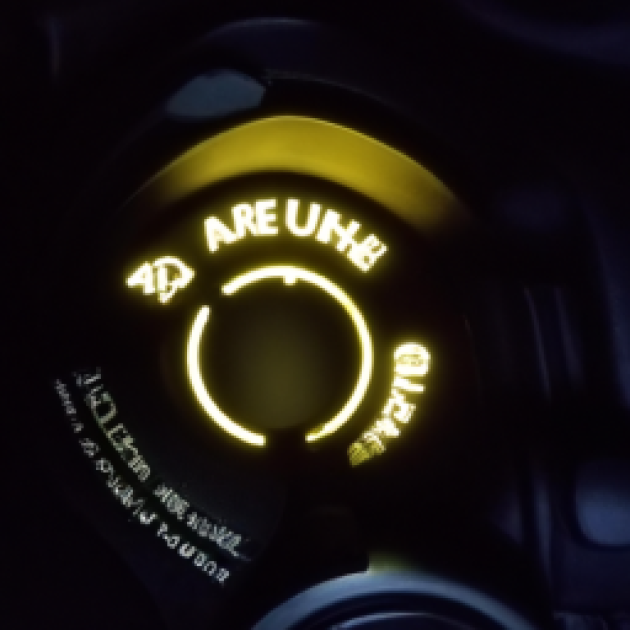Motorcarspecs.com delivers automobile industry news, and its unique content can entice viewers from all over the world. Every day, the Motorcarspecs.com team assists thousands of consumers in conducting vehicle research and comparing pricing on a wide range of automotive products and services. We’ve been pioneering innovative ways for prospective buyers to engage with automobiles and obtain timely and accurate information since January 2020. We created this platform for you, the viewers, to provide an honest evaluation on a relevant automobile, which we will completely review and post on our site.
My Check Engine Light Is On — What Do I Do?
No one wants to see the dreaded check engine light illuminated on their car’s dashboard. This is a sure sign something isn’t quite right with the vehicle. While a flashing check engine light indicates a more serious problem, it’s important to take any check engine light seriously regardless of what type of light it might be. Here’s what you’ll need to do if you find yourself in this situation.
Find out what’s wrong
The first thing you must do when your check engine light is on is determine the cause of the problem. Performing a diagnostic scan at a local auto repair shop is a great way to quickly and accurately find out the source of the issue. Once you know what’s causing the check engine light to come on, you can then begin to think about possible solutions to the problem.
Repair the issue
The next step is to repair the issue that the check engine light is indicating. Depending on what the issue is, this can range from a relatively simple and inexpensive job to a more costly and complex labor task.
Things to consider include:
- Do I have the skills, tools and/or knowledge required to do the job myself?
- Do I have a trusted, professional auto shop local to me?
- Is there a suitable aftermarket part available that can adequately fix the problem?
Keep in mind that it’s important to properly address the cause of your check engine light, even if it’s the more expensive option. Failing to do so can result in your vehicle needing more costly repairs down the line.
Prevent a recurrence
Once the problem that caused the check engine light to come on has been resolved, it’s important to ensure you avoid the same issue in the future. Taking proper preventative maintenance steps, such as regularly changing the oil, checking the belts and hoses, and replacing the air filter, are just a few effective ways of doing this.
Conclusion
Having the check engine light illuminated on your car’s dashboard can be a frightening sight. However, it’s important to take it seriously and take the proper steps to diagnose, repair and prevent recurrence of the problem. Doing so will save you money in the long run and will ensure the continued proper operation of your vehicle.
What are the most common reasons for a check engine light to be on?
1. Loose or faulty gas cap
2. Damaged or worn spark plugs
3. Air filter clogged or dirty
4. Faulty oxygen sensor
5. Mass air flow sensor problems
6. Catalytic converter problems
7. Ignition coil issues
8. Issues with the Evaporative Emission (EVAP) system
9. Low engine coolant level
10. Broken or damaged engine components
Q: How do I reset a check engine light?
A: Resetting a check engine light generally involves accessing the diagnostic system of the vehicle and clearing the error codes. Depending on the vehicle make and model, this step may involve a variety of diagnostic tools, such as an OBD2 scanner, and may require knowledge of the specific manufacturer’s diagnostic systems. It is recommended that you consult your vehicle’s manual or an experienced automotive repair technician for assistance.
Reasons Why Your Check Engine Light is On
The check engine light on your car can be a signal that something isn’t quite right with your vehicle. Here are some of the most common reasons why your check engine light is on:
Faulty Gas Cap
One of the simplest reasons your check engine light may be on is due to a loose or broken gas cap. Check to make sure that the gas cap is properly secured. If it is not, tighten the cap or replace it with a new one to solve this issue.
Spark Plug Issues
If your check engine light is blinking, this may indicate that one or more of your spark plugs has gone bad. If this is the case, it is important to get your spark plugs checked and replaced as soon as possible.
Faulty Oxygen Sensor
The oxygen sensor helps to regulate the air-fuel mixture in your vehicle. If the oxygen sensor is failing, it will cause your check engine light to turn on. Faulty oxygen sensors should be replaced to ensure that your car is running properly.
Catalytic Converter Issues
The catalytic converter is responsible for reducing harmful pollutants that are emitted from your vehicle. If your catalytic converter is not functioning properly, it will cause your check engine light to turn on. You should have the catalytic converter inspected and, if necessary, replaced.
Other Reasons Why Your Check Engine Light is On
- Mass Air Flow Sensor: Issues with the mass air flow sensor can cause your check engine light to turn on.
- Faulty Electronics: Wiring and other electrical issues can also trigger the check engine light.
- Low Levels of Oil: If your engine oil is low, the oil pressure sensor may set off the check engine light.
If you suspect that your check engine light is on, it is important to take your car to a mechanic to have it inspected and repaired. Check engine lights can indicate serious issues with your car, and if left unchecked, can be potentially dangerous and may require more costly repairs.
A check engine light is one of the most intimidating indications on a car’s dashboard. It typically means that an issue exists that could adversely affect the car’s performance and fuel efficiency. While it can be worrying, it is important to understand why this light has come on and what it means.
The check engine light serves as a warning signal, illuminating when a problem has been detected by the vehicle’s onboard diagnostic computer. This can be caused by a wide variety of issues, ranging from a loose gas cap to more serious issues like engine misfires or catalytic converter failure.
If the light illuminates, owners should take their car to a qualified repair shop, where a diagnostic test can be performed. This means plugging into the car’s computer to identify the problem, which may be as simple as a loose gas cap or a worn spark plug. It is important to check the issue as soon as possible in order to prevent further damage from occurring.
To minimize the chance of the check engine light coming on, make sure to keep up with regular maintenance. This includes things like checking coolant levels, changing the oil and air filter, and regularly checking the fuel cap. This will reduce the risk of issues related to malfunctioning car components.
Overall, the check engine light can be an intimidating sight on a car’s dashboard. However, it is important to understand what it means, and why it has come on. To prevent more serious problems, be sure to take the car in for regular maintenance and have them check the light if it is illuminated.
What are some common reasons for a check engine light to come on?
1. A loose or faulty gas cap
2. Oxygen sensor failure
3. Catalytic converter need of replacement
4. Issues with spark plugs, spark plug wires, or ignition coils
5. Mass airflow sensor failure
6. Malfunctioning camshaft position sensor
7. Low engine oil level
8. Exhaust gas recirculation (EGR) system due for maintenance
9. Air filter needs replacement or cleaning
10. Malfunctioning or damaged fuel injectors
What actions can I take to reset my check engine light?
1. Make sure your gas cap is properly tightened.
2. Check all your spark plugs and wires.
3. Clear the codes from your car’s computer using an OBD-II scanner.
4. Check your exhaust system for any leaks or blockages.
5. Check for any loose or damaged wiring.
6. Replace your oxygen (O2) sensors if needed.
7. Have a mechanic run a diagnostic test to check for any further needed repairs.
Q: How do I know if my check engine light is reset?
In most cases, you can tell if a check engine light has been reset by turning your car off, waiting a few minutes, and then turning it back on. If the light does not come back on when the car is restarted, then it has likely been reset successfully. If the light does come back on, it may be best to take your car to a professional mechanic to get the issue fixed. It is important to have any repairs checked and certified as soon as possible to ensure the best performance and safety of your car.
Q: How can I reset the check engine light?
A: The best way to reset the check engine light is to disconnect the car battery for at least 30 seconds, then reconnect it. This should reset the check engine light and clear any error codes stored in the vehicle’s computer. If this doesn’t work, or if the light comes back on, it may be necessary to bring your car to a qualified repair shop to have it professionally diagnosed and fixed.
Q: What could cause a check engine light to come on?
A: Several different things can cause the check engine light to come on, including issues with oxygen sensors, spark plugs, vacuum leaks, Mass Air Flow sensors, exhaust leaks, catalytic converters, radiator or evaporative emissions leaks, and engine temperature sensors. It is important to determine the exact cause of the check engine light to ensure proper repairs are made.


